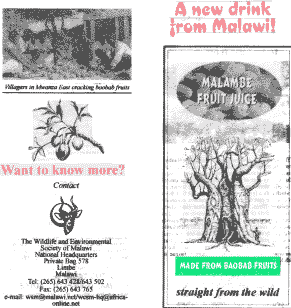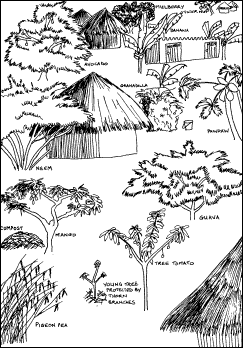


 |  |  | |
| Workshop tools | Programme | Participants | Case studies | Report | Papers | Resource documents | Links | |||
| Back to programme |
| Papers > Sam Page |
| Using participatory approaches to mitigate the impacts of HIV/AIDS |
|
Converted from MS PowerPoint presentation |
|
Sam L J Page Consultant |
|
Using Participatory Approaches to Mitigate the Impacts of HIV/AIDS
Sam L J Page The impacts of HIV/AIDS on African households in terms of increasing poverty and labour constraints in the absence of a national social welfare system... MODERATE
|
||||||||||||||||||||||||||||||||||||||||||
Moderate Impact of HIV/AIDS

Mr & Mrs Muketsi with the youngest of their 7 orphaned grand children. |
||||||||||||||||||||||||||||||||||||||||||
SEVERE
|
||||||||||||||||||||||||||||||||||||||||||
Severe Impact of HIV/AIDS

Margaret Shambara with her HIV+ son and 3 of her 5 orphaned grandchildren. |
||||||||||||||||||||||||||||||||||||||||||
VERY SEVERE
|
||||||||||||||||||||||||||||||||||||||||||
Very Severe Impact of HIV/AIDS

HIV+ widow spraying her cotton crop accompanied by her two small children |
||||||||||||||||||||||||||||||||||||||||||

19 year old Louis Gobede with 3 of his 5 orphaned brothers and sisters |
||||||||||||||||||||||||||||||||||||||||||
|
The impacts of HIV/AIDs are not just measured in terms of loss of labour and income but in terms of a phenomenon called
“short-termism”
due to hopelessness and despair.
Short-termism encourages selfishness and greed rather than community action and innovation. Many donors are guilty of promoting short-termism when they with-draw support from crucial development projects after only 3 years or less. How do we know when we have mitigated the impacts of HIV/AIDS?
|
||||||||||||||||||||||||||||||||||||||||||
Effects of the Zambezi Valley Organic Cotton Project on Mitigating the Impacts of HIV/AIDS

This project promoted the formation of support groups and motivated vulnerable people, especially widows from AIDS, to join in the learning activities. The widows said they liked growing organic cotton because it provided a cash income and increased food security. 
This project was cut by the donor and the organic farmers were later attacked by ZANU PF militia. |
||||||||||||||||||||||||||||||||||||||||||
|
Effects of CBNRM Projects on Mitigating the Impacts of HIV/AIDS in Malawi
13 CBOs were promoting CBNRM activities such as; tree planting fish farming fruit tree production fruit processing herb gardening mushroom growing briquette making improved stove making Out of 13 CBNRM projects investigated:
Vulnerable people benefiting from the activities
|
||||||||||||||||||||||||||||||||||||||||||

58 year old Agnes Chipanga was caring for 4 orphaned grandchildren. When asked about harvesting the malambe she said that the “owners” of the trees had threatened to beat her. 
Lucy Wyman outside her rented shack, seeking to make money from local fishermen to support her 3 children and 6 orphaned nieces and nephews. |
||||||||||||||||||||||||||||||||||||||||||
Rural people need more information on
Reducing Vulnerability to HIV/AIDS through Positive Living For improved health and longevity for farming families in HIV/AIDS-affected areas of Africa. A practical training manual for community workers What is Positive Living?
|
||||||||||||||||||||||||||||||||||||||||||
Looking at the underlying causes of HIV

These are;

They said their vulnerability was due to poverty and tradition Women looked at their ability to protect themselves from HIV 
They said they were too powerless to take responsibility for protecting themselves from HIV. Analysing the causes and effects of female powerlessness 
The causes are religious and traditional, enforced by abuse of power and poor education. The effects are poverty, lack of human rights and low self esteem. These effects make women and girls vulnerable to HIV. Men looked at their vulnerability to HIV 
They said that abuse of power, comparative wealth and the enjoyment of risk-taking makes them vulnerable to HIV. Men looked at their ability to protect themselves from HIV/AIDS 
They realised that they are free to take responsibility for their own lives through “behaviour change”. |
||||||||||||||||||||||||||||||||||||||||||
|
Taking responsibility
Men have the power to address the root causes of female powerlessness. Men should be given the opportunity to negotiate power-sharing with women to reduce their vulnerability to HIV Preventing disease by cleaning up the environment Demonstrating how microbes are spread... |
||||||||||||||||||||||||||||||||||||||||||
Can you spot the health hazards?

Inspecting local homesteads for health hazards 
|
||||||||||||||||||||||||||||||||||||||||||
Infectious diseases identified in 3 households included;
|
||||||||||||||||||||||||||||||||||||||||||
What makes us healthy?

|
||||||||||||||||||||||||||||||||||||||||||
The Impact of Declining T-cells on Vulnerability to Infection and Life Expectancy
|
||||||||||||||||||||||||||||||||||||||||||
|
The best local sources of nutrients
Avocado, baobab, bambara, banana, dark green leafy vegetables, eggs, fish, guava, insects, mango, pumpkin, small grains. Who gets the most nutritious food?
|
||||||||||||||||||||||||||||||||||||||||||
The impact of power relations on food distribution within the family

The women gave the most food to the father and the least to the children and the sick auntie Planning a nutrition orchard 
Fruit trees provide the best low-risk source of nutrition |
||||||||||||||||||||||||||||||||||||||||||
Fruit Trees for Positive Living
|
||||||||||||||||||||||||||||||||||||||||||
Planning a nutrition garden

|
||||||||||||||||||||||||||||||||||||||||||
|
||||||||||||||||||||||||||||||||||||||||||
Community Action

Mr & Mrs Sibanda sharing their garden with the community in order to feed orphans Community Action 
Using traditional methods in Mr & Mrs Sibanda’s collective nutrition garden Community Support Groups 
Mrs Mudzipurwa receiving emotional and material support from the community Providing hope... 
Mrs Mudzipurwa demonstrating that her friends can still help her stand on her own two feet! |
||||||||||||||||||||||||||||||||||||||||||
| Main organisers: | ||||||||||
|
|
| |
|
| |
|
| |
|
| |
|
| |
|